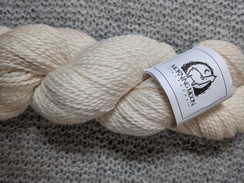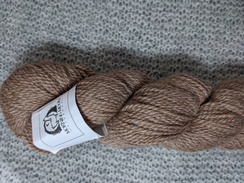Alpaca Fiber
"Let's Talk Fiber"©
Alpacas in Peru
In addition to the famous ruins of stone, the ancient peoples of Peru, Bolivia, and Chile left behind evidence of a rich cultural tradition of high quality textiles, which continues today. With great skill and the simplest of looms, they weave intricate patterns. The 'backstrap looms' many of these masterful works are woven on consist of a stick in the ground around which lengths of measured yarns are wrapped to create the warp, with the ends tied to the waist.
Around 6,000 years ago, archelogical sites in the Andean region reveal evidence of the domestication of the vicuna, which became the alpaca. In addition to meat and hides, these animals provided the fibers that are still spun today by the local women as they have been for thousands of years, on simple drop spindles.
Visit the links below for more information:
http://www.peruvianconnection.com/category/fiber+-+product+info/alpaca+fiber.do
http://www.peruvianconnection.com/category/id/201/100221.do?news=handknitting
The alpaca's primary purpose has been as a fleece animal for over 5000 years. They produce one of the world's finest and most luxurious natural fibers. It's as soft as cashmere, warmer, lighter and stronger than wool and has the widest range of naturally occurring colors of any fiber animal in the world. There are 22 natural colors with many variations and blends. Alpaca fiber is also hypoallergenic.
Once unique to the southern hemisphere, alpacas were domesticated by the ancient Peruvians for their beautiful fleece. In the 1820's British textile firms set up commercial houses in Peru to process this exquisite fiber. The first step in this process is shearing. In Peru, shearing begins in November and lasts through January. Once the fleece is collected its bundled separately by classification: white, light fawn, and colored. Master sorters who have been in their trade for more than 30 years then sort it. Each fleece can yield several colors and many different grades of alpaca fiber. These variables within the fleece can only be determined by an experienced hand and eye. The women who sort the alpaca fiber learned their trade at their mother's feet and continue the tradition. The second sort is according to breed, color, quality and length. Before the fiber becomes yarn, it will be sorted by hand as many as 3 times. It is then graded based on fiber diameter measured in microns. It is then weighed and moves on to an industrial manufacturing process. The sorted fiber goes through a combing machine, which opens up the fleece and vibrates to remove vegetable matter. It is then cleaned by washing it in 8 different baths. The last 3 washes are simply clean water. Once the fleece is cleaned it can be dyed producing every color imaginable or kept in it's natural state. Even primary shades of natural fiber can be blended to create color after color. The cleaned, dyed fleece is then carded to align and elongate the fiber and finally, spun into yarn.
The US alpaca fiber market is still being developed. The value of the alpaca fleece is the economic foundation of the future market for alpacas. Breeders place a high emphasis on density and staple length because those qualities determine the annual harvest of fiber from each animal. Each animal will produce between 5 to 10 pounds of fleece per year. The average price for alpaca fiber is $2 to $4 an ounce. A breeder can join organized co-ops for commercial processing which then turns the fleece into finished products (yarn, sweaters, hats, scarves, socks etc) which are sold back to members at a discounted price. Breeders can also process their own or use a fiber mill. Fiber is often sold to cottage industries that revolve around hand spinning and weaving.
In addition to the famous ruins of stone, the ancient peoples of Peru, Bolivia, and Chile left behind evidence of a rich cultural tradition of high quality textiles, which continues today. With great skill and the simplest of looms, they weave intricate patterns. The 'backstrap looms' many of these masterful works are woven on consist of a stick in the ground around which lengths of measured yarns are wrapped to create the warp, with the ends tied to the waist.
Around 6,000 years ago, archelogical sites in the Andean region reveal evidence of the domestication of the vicuna, which became the alpaca. In addition to meat and hides, these animals provided the fibers that are still spun today by the local women as they have been for thousands of years, on simple drop spindles.
Visit the links below for more information:
http://www.peruvianconnection.com/category/fiber+-+product+info/alpaca+fiber.do
http://www.peruvianconnection.com/category/id/201/100221.do?news=handknitting
The alpaca's primary purpose has been as a fleece animal for over 5000 years. They produce one of the world's finest and most luxurious natural fibers. It's as soft as cashmere, warmer, lighter and stronger than wool and has the widest range of naturally occurring colors of any fiber animal in the world. There are 22 natural colors with many variations and blends. Alpaca fiber is also hypoallergenic.
Once unique to the southern hemisphere, alpacas were domesticated by the ancient Peruvians for their beautiful fleece. In the 1820's British textile firms set up commercial houses in Peru to process this exquisite fiber. The first step in this process is shearing. In Peru, shearing begins in November and lasts through January. Once the fleece is collected its bundled separately by classification: white, light fawn, and colored. Master sorters who have been in their trade for more than 30 years then sort it. Each fleece can yield several colors and many different grades of alpaca fiber. These variables within the fleece can only be determined by an experienced hand and eye. The women who sort the alpaca fiber learned their trade at their mother's feet and continue the tradition. The second sort is according to breed, color, quality and length. Before the fiber becomes yarn, it will be sorted by hand as many as 3 times. It is then graded based on fiber diameter measured in microns. It is then weighed and moves on to an industrial manufacturing process. The sorted fiber goes through a combing machine, which opens up the fleece and vibrates to remove vegetable matter. It is then cleaned by washing it in 8 different baths. The last 3 washes are simply clean water. Once the fleece is cleaned it can be dyed producing every color imaginable or kept in it's natural state. Even primary shades of natural fiber can be blended to create color after color. The cleaned, dyed fleece is then carded to align and elongate the fiber and finally, spun into yarn.
The US alpaca fiber market is still being developed. The value of the alpaca fleece is the economic foundation of the future market for alpacas. Breeders place a high emphasis on density and staple length because those qualities determine the annual harvest of fiber from each animal. Each animal will produce between 5 to 10 pounds of fleece per year. The average price for alpaca fiber is $2 to $4 an ounce. A breeder can join organized co-ops for commercial processing which then turns the fleece into finished products (yarn, sweaters, hats, scarves, socks etc) which are sold back to members at a discounted price. Breeders can also process their own or use a fiber mill. Fiber is often sold to cottage industries that revolve around hand spinning and weaving.
Tuesday, March 19, 2019


